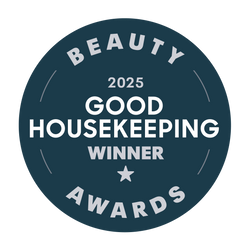Flooding: Your New Best Friend
You may have heard the term “moisture sandwiching”— and if not, it’ll make sense once we explain. Another name for “skin flooding,” this refers to the process of drenching the skin with layer upon layer of targeted, hydrating ingredients. You can think of it as a tall glass of water for your skin. It quenches its thirst and boosts the natural vitality of your skin barrier.
Want us to be a little more specific? Ok, picture your skin with tiny little channels beneath its surface. When your skin is damp, the humectants or ‘moisture magnets’ in your skincare (think ingredients like hyaluronic acid, glycerin and salicylic acid) will travel further down these channels, penetrating deeper into your skin’s surface, maximizing the benefits of each ingredient.
When it comes to layering skincare, the skin responds best when each product is applied separately, so you’ll want to wait a few minutes between moving into the next product, so the formula properly absorbs. This can take a few minutes, so be patient, listen to a podcast, do some journaling and allow each product to do its job.
Because, funny enough, if you don’t layer or “flood” your products, it will actually confuse the skin. It will leave the product sitting superficially on top of one another, and can actually have an adverse effect by obstructing absorption. But, once you master this application process, rest assured its effects are beneficial for all.
While skin flooding is especially recommended for those with dry or dehydrated complexions, boosting your skin’s hydration levels is never going to be a bad thing— regardless of skin tone, type or texture. That said, oily or acne-prone skin should opt for lightweight, oil-free products when doing this; whereas, gentle and fragrance-free formulations would best suit sensitive skin.












































































